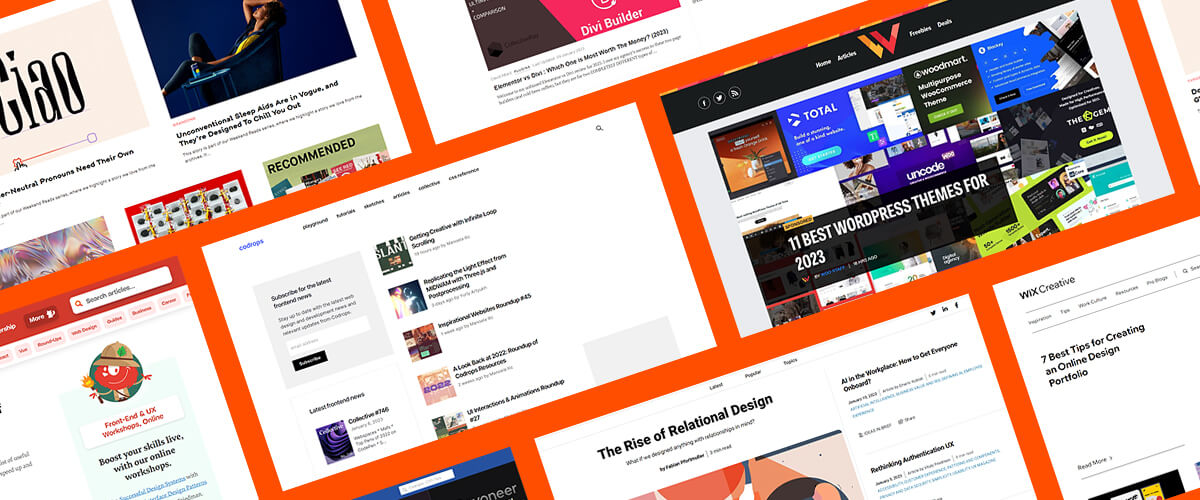Your SEO strategy is about to become obsolete. And I’m not being dramatic.
While you’re still chasing backlinks and stuffing keywords, Google and AI are playing a completely different game. They’re not looking for what you say anymore. They’re looking for who’s saying it.
The shift happened while we were all distracted by ChatGPT. And most businesses haven’t caught on yet.
The sea of sameness is drowning your brand
Everyone’s using the same AI tools to create the same vanilla content.
Over 80% of businesses are already using AI. ChatGPT, Claude, Gemini. Pick your poison. They’re all trained on the same internet, optimizing for the same patterns, producing the same “professional” output.
Marketing experts at CMSwire are calling it “a sea of sameness”. When everyone’s content looks identical, sounds identical, and says the same things in the same way, how does anyone stand out?
What’s even scarier? 58% of consumers now use AI tools for product recommendations. That’s up from 25% last year. With a 1,300% surge in AI search referrals.
Think about that. More than half your potential customers aren’t Googling anymore. They’re asking AI.
And if AI doesn’t know your brand? You’re invisible.
Why entity SEO is replacing keyword SEO (and what that actually means)
Search isn’t a platform. It’s a behavior. And it’s fracturing across AI, social, and SERPs,” according to Search Engine Land.
This isn’t just another algorithm update you can hack your way around. It’s a fundamental shift in how search works.
The old game: keyword matching
Used to be simple. Find keywords people search. Create content around those keywords. Build backlinks. Rank higher.
Google would match search queries to pages based on keyword relevance. More keywords plus more backlinks equaled higher rankings.
That game is ending.
The new game: entity recognition
Now Google’s asking different questions:
- Who created this content?
- What’s their expertise?
- Who else talks about them?
- In what context are they mentioned?
- Can I trust this source?
It’s not looking for keywords. It’s looking for entities. People, brands, organizations that exist in the real world.
Think of it this way. In the old SEO, Google read words. In entity SEO, Google understands things.
What makes something an entity?
An entity isn’t just a brand name. It’s the full picture of who you are across the entire internet.
Your digital identity includes:
- Your brand name and variations
- Products and services you’re known for
- People associated with your brand
- Topics you’re an authority on
- Other entities that mention you
- The context of those mentions
Google builds this understanding through its Knowledge Graph. AI models build it through training data. Both are looking for the same signals.
And while you’re still thinking about keywords, your competitors are already building their digital footprint. Every day you wait is another day they’re pulling ahead.
How brand mentions became the new backlinks
Brand mentions have emerged as a pivotal element in modern SEO strategies,” according to recent research.
But this isn’t just about getting your name out there. It’s about building what I call “contextual authority.”
The power of co-occurrence
When your brand appears alongside certain topics repeatedly, search engines and AI models start making connections.
Let’s say you’re a conversion rate optimization agency. You want to be mentioned in contexts like:
- “Increased conversions by 47%”
- “A/B testing expertise”
- “Landing page optimization”
- “Revenue growth strategies”
Not just “XYZ Agency is great!” That’s worthless.
You need your brand mentioned in the right contexts, solving the right problems, associated with the right outcomes.
Linked vs unlinked mentions
Something that surprises most people: Unlinked mentions, often referred to as ‘implied links,’ signal to search engines that your brand is being discussed, even without a direct hyperlink,” notes Appear Online.
Google’s gotten smart enough to understand when people talk about you without linking. These unlinked brand mentions still build authority.
AI models work the same way. They don’t need hyperlinks. They need context.
The trust factor
Media mentions across trusted publications. Expert quotes. First-party research. Brand citations. These are the new ranking factors,” for both Google and AI.
Quality matters more than quantity. One mention in a respected industry publication beats 100 mentions on random blogs.
BTW, this shift is happening fast. The brands building authority now will dominate when AI search fully takes over. Which, based on that 1,300% surge, is basically tomorrow.
How brand recognition actually builds in practice (the patterns I’ve seen work)
Let me share the pattern I’ve seen work repeatedly with B2B companies building their brand recognition from scratch. These insights come from watching dozens of businesses go from invisible to unavoidable.
Starting point: Total invisibility
Here’s what I typically find when auditing a company with no brand recognition:
- Google their brand name? Just their website shows up. No Knowledge Panel, no brand box.
- Ask AI about them? “I don’t have information about that company.”
- Check brand mentions? Usually just self-published press releases and directory listings.
Their digital presence is basically a ghost town.
Phase 1: Building the foundation (first 60 days)
The companies that succeed always start with the unglamorous basics. They claim and optimize every major business profile:
- Google Business Profile (yes, even for B2B)
- LinkedIn company page with detailed information
- Crunchbase profile with funding info
- Industry-specific directories
Then they add comprehensive structured data to their website. Not just basic schema. Detailed Organization markup including founders, products, services, same-as connections.
I’ve watched companies skip this step thinking it’s too basic. They always regret it. These profiles become the skeleton that everything else hangs on.
Phase 2: Creating authority through original research
This is where the magic happens. The pattern that works best? Creating what I call “citation-worthy content.”
Not blog posts about their product. Research and insights that position them as the expert source.
I’ve seen companies survey their target market, analyze industry trends, publish original data. The key is creating content that journalists and other businesses want to reference.
One pattern that works particularly well: surveying 300-500 people in your target market about their biggest challenges. Real data. Real insights. The kind of content that gets picked up.
Smart companies pitch this to relevant publications. Not with “look at our product” angles, but with “here’s data your readers need” angles.
The results vary, but I typically see 10-20 legitimate media mentions from one good research piece. Publications cite the research, not review the product. That’s the goal.
Phase 3: Strategic co-occurrence building
This is the advanced move most companies miss. You need to map out exactly which contexts you want your brand associated with.
Let’s say you’re in project management software. You want consistent mentions alongside:
- “Remote project management”
- “Asynchronous collaboration”
- “Team productivity metrics”
Then you systematically build content and relationships to create these associations.
Guest posts? Sure, but only on sites already ranking for your target contexts. And never just name-dropping. Always providing value in relevant contexts.
I’ve watched founders become regular podcast guests. Not pitching products. Having real conversations about industry challenges. Their brand gets mentioned naturally alongside target topics.
Typical timeline and results
From what I’ve observed across multiple companies:
Month 1-2: Foundation building shows minimal external results but sets critical infrastructure.
Month 3-4: Media mentions start appearing. Brand searches begin increasing (I’ve seen anywhere from 200-500% increases).
Month 5-6: This is when things get interesting. Google Knowledge Panels start appearing. AI tools begin having basic information. Organic traffic surges.
But here’s the real win I see repeatedly: when someone searches for your category terms or asks AI for recommendations, companies following this pattern start appearing. Not from keyword stuffing. From entity recognition.
Common failures I’ve observed
Not everything works. I’ve watched companies try the old “build links at scale” approach. Google ignores them. AI definitely doesn’t care.
Forced brand mentions in irrelevant contexts actually hurt. When companies push too hard to get mentioned everywhere, the quality drops. Ten high-quality contextual mentions beat 100 random ones every time.
Also, AI recognition lags. Even after building strong signals, it typically takes 3-4 months before AI models start recommending brands. Companies that expect instant results always get frustrated.
The pattern is clear: systematic brand building beats random tactics. Every time.
Other ways brands are winning with entity SEO
While that SaaS example shows one path, I’ve seen other approaches work:
The expertise play: A cybersecurity consultant focused entirely on becoming the cited expert on one narrow topic: “supply chain attacks.” Every piece of content, every interview, every mention connected him to that specific expertise. Within a year, both Google and AI treated him as the go-to authority.
The ecosystem approach: An ecommerce platform built entity authority by creating connections with related entities. Integration partners, customer success stories, industry associations. They became a “node” in their industry’s knowledge graph.
The research machine: A marketing agency publishes quarterly studies with real data. Media outlets cite them. Other brands reference their findings. They’ve become an entity through information authority, not service promotion.
Your 30-day entity SEO action plan
Enough theory. Here’s exactly what to do starting Monday.
Week 1: Entity audit
Map your current brand presence:
- Google your brand name. What shows up? Knowledge Panel? Brand box? Just your website?
- Test AI recognition. Ask ChatGPT, Claude, and Perplexity about your brand
- Search for brand mentions using Google Alerts or Mention.com
- List where you’re mentioned and in what contexts
- Identify gaps in your digital footprint (what’s missing?)
Red flags to watch for:
- No Knowledge Panel after 2+ years in business
- AI has zero information about you
- Only mentions are your own content
- No co-occurrence with your industry terms
Week 2: Foundation building
Fix the basics:
- Implement comprehensive Organization schema on your website
- Claim/update all major business profiles
- Ensure NAP (Name, Address, Phone) consistency everywhere
- Create or update your Wikipedia/Wikidata entries if eligible
- Build out founder/leadership entities (they strengthen company entity)
Tools you’ll need:
- Google’s Structured Data Testing Tool
- Schema.org documentation
- Semrush’s Listing Management (or similar)
Week 3: Authority content creation
Develop brand-building anchor content:
- Identify one narrow topic where you have genuine expertise
- Create comprehensive research or insights on that topic
- Include original data, unique perspectives, or exclusive access
- Format for media citations (clear stats, quotable insights)
- Prepare distribution strategy for relevant publications
Remember: This isn’t about your product. It’s about establishing topical authority.
And here’s the kicker. Every week you delay this is another week your competitors get to own these topics. In six months, they’ll be the established authority while you’re still planning.
Week 4: Strategic mention building
Start building quality mentions:
- Create a list of 20 publications where your ideal customers read
- Identify 5-10 podcasts in your space
- Pitch genuinely valuable angles (not product features)
- Focus on co-occurrence with your target contexts
- Track every mention and its context
What to track:
- Publication domain authority
- Context of mention
- Linked vs unlinked
- Sentiment and positioning
- Related entities mentioned
Measuring entity strength (beyond rankings)
Traditional SEO metrics don’t tell the whole brand authority story. Here’s what actually matters:
Direct entity signals
Knowledge Panel presence: The ultimate Google entity recognition. If you have one, you’re an entity. If not, keep building.
AI recognition test: Monthly check how major AI models describe your brand. Document improvements.
Brand search volume: Growing brand searches indicate entity strength. Use Google Search Console to track.
SERP features: When Google shows brand boxes, image carousels, or other entity-related features for your brand.
Indirect entity signals
Contextual rankings: Ranking for topics without targeting specific keywords. Sign that Google understands your topical authority.
Brand + modifier searches: People searching “your brand + review” or “your brand + alternative” shows entity recognition.
Mention velocity: Rate of new brand mentions across the web. Quality matters more than quantity.
Co-occurrence patterns: How often your brand appears with target topics. Use brand monitoring tools to track.
AI-specific signals
Recommendation frequency: How often AI tools suggest your brand for relevant queries.
Context accuracy: Whether AI describes your brand correctly and in proper context.
Competitive positioning: How AI compares you to competitors in responses.
Common entity SEO mistakes that waste time and money
I see these mistakes constantly. Save yourself the pain.
The biggest waste of time? Chasing volume over context. I watched a client build 1,000 directory links thinking it would create brand recognition. Those mentions had no context, no authority, no value. Google ignored them. AI definitely didn’t care.
Focus on mentions that actually position your brand. Quality beats quantity every time.
Another trap people fall into is ignoring their internal entities. Your company is one thing, but what about your founders? Your key employees? Your products? These are all separate but connected entities.
Build these supporting pieces. They strengthen your main brand through connections. Think of it like building a web of credibility instead of a single point.
Then there’s the consistency problem. If your brand messaging is scattered across platforms, you’re confusing the algorithms. Different names, different positioning, different visual identity. It’s like trying to build a reputation while wearing a different disguise every day.
Maintain consistency in:
- Brand name usage
- Core positioning
- Associated topics
- Visual identity
Here’s what really kills me. People expect instant results. They’ll build a few mentions and wonder why they don’t have a Knowledge Panel next week.
Brand authority takes time. Google needs to see sustained signals. AI models update their training data periodically. Plan for 6-12 months to see significant recognition. Quick wins happen, but real authority builds slowly.
And please, don’t forget about your existing customers. They’re your best brand builders. They naturally mention you in the right contexts.
Make it easy for them:
- Create case study programs
- Encourage reviews on relevant platforms
- Build community spaces for discussion
- Feature their success stories
Your customers are already talking about you. Give them better ways to do it.
The future of search is about trust, not tricks
BCG found that 74% of companies are struggling to achieve real value with AI.
You know why? They’re focusing on the tools, not the strategy.
Everyone can create professional content now. Everyone can optimize for keywords. Everyone can build links.
But not everyone can build a brand worth trusting.
The winners in this new landscape won’t be the ones with the best SEO tricks. They’ll be the ones who build genuine authority, create real value, and earn authentic mentions.
Start building what AI can’t copy. Your brand.
Because when algorithms decide what to show the world, they pick the names they trust.
Next steps: Your entity SEO checklist
Ready to start? Here’s your priority order:
Immediate actions (this week):
- [ ] Complete entity audit using the week 1 process above
- [ ] Set up brand mention monitoring
- [ ] Document current AI recognition baseline
- [ ] Identify your entity gaps
Short-term focus (next 30 days):
- [ ] Fix technical entity signals (schema, profiles)
- [ ] Create one piece of entity anchor content
- [ ] Build relationships with 5 relevant publications
- [ ] Start tracking entity metrics
Long-term strategy (3-6 months):
- [ ] Develop sustained thought leadership program
- [ ] Build media relationships in your industry
- [ ] Create original research or data
- [ ] Expand entity connections strategically
Remember: This isn’t about gaming a system. It’s about building something real that both humans and machines can recognize, understand, and trust.
The algorithms have already changed. The question is: Will your strategy change with them?
Or will you still be chasing keywords while everyone else builds the brands that AI recommends?




